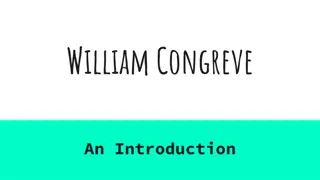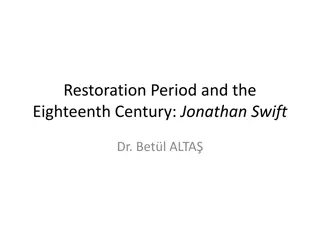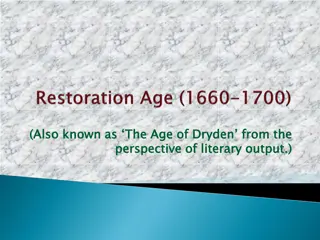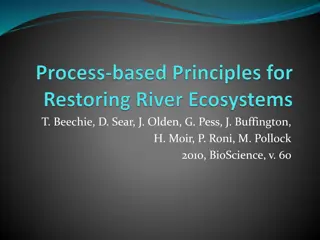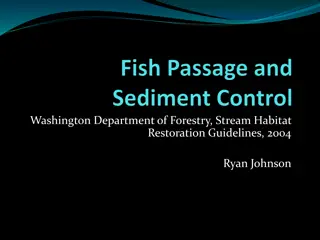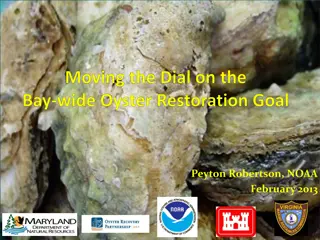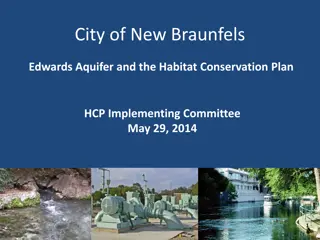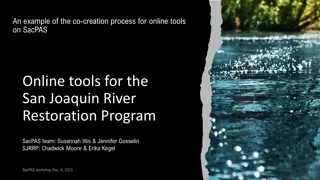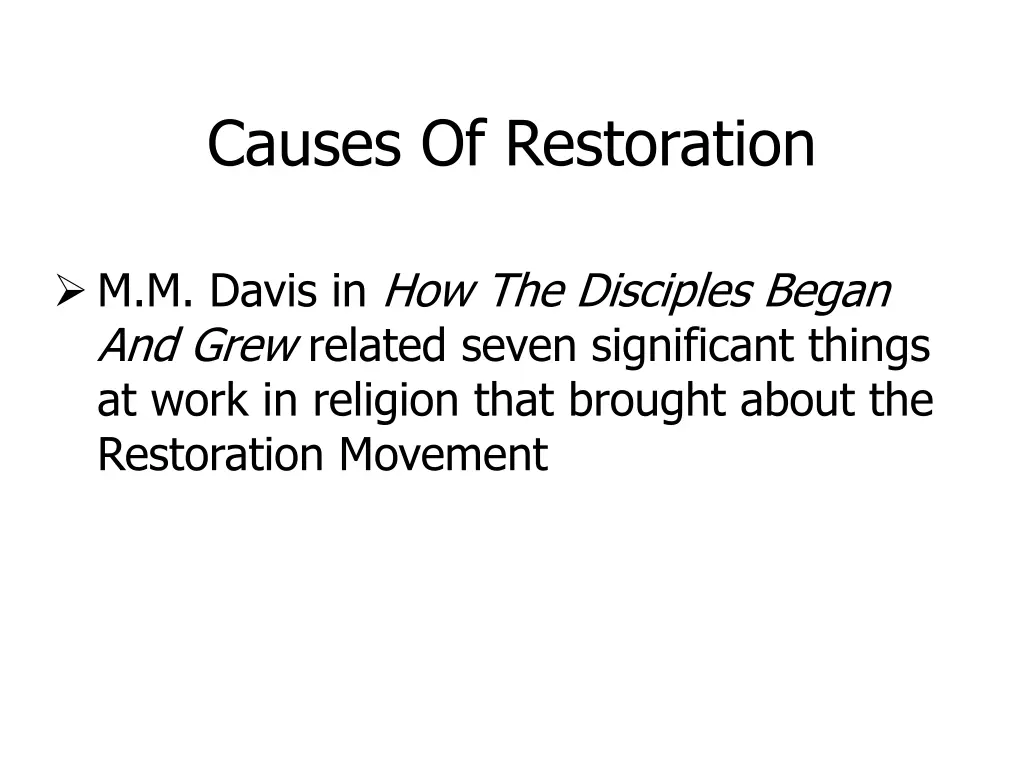
Causes of Restoration Movement and Renaissance Transition
Discover the significant factors behind the Restoration Movement and the transition from medieval to modern times in Europe. Explore the division, conflict, theological confusion, and clergy arrogance that shaped religious history. Images and insights reveal key moments of change and unity.
Uploaded on | 0 Views
Download Presentation

Please find below an Image/Link to download the presentation.
The content on the website is provided AS IS for your information and personal use only. It may not be sold, licensed, or shared on other websites without obtaining consent from the author. If you encounter any issues during the download, it is possible that the publisher has removed the file from their server.
You are allowed to download the files provided on this website for personal or commercial use, subject to the condition that they are used lawfully. All files are the property of their respective owners.
The content on the website is provided AS IS for your information and personal use only. It may not be sold, licensed, or shared on other websites without obtaining consent from the author.
E N D
Presentation Transcript
Causes Of Restoration M.M. Davis in How The Disciples Began And Grew related seven significant things at work in religion that brought about the Restoration Movement
The Renaissance Movement of transition in Europe from medieval to modern world, especially classical arts and letters. Earliest Traces To 14thCentury Italy Within 100 years Italy brought in Greek literature Reached its zenith by 1stof 16thCentury through men like Michelangelo, Leonardo da Vinci and Raphael. Soon spread to Germany and England The students of science, philosophy and religion started looking for the sources of things. Two Fundamental Principles The Right of Private Judgment The Bible when studied would produce unity among Christians as it did in the 1stCentury
The Divided Church In light of Jesus teaching in John 17:11-23, unity was not only possible, but commanded. Other passages promoting unity: John 10:16; 1 Corinthians 1:10; 3:3; 12:12-27 Churches in their day were far from will or disposition to do promote unity Such divisions as existed weakened the forces of God Instead of one force for God, there were many small detachments jealously watching each other rather than the common foe
A Warring Church Churches were devouring one another Protestant Churches were physical enemies of the Rome Church Public displays of rhetorical hatred was spouted forth Physical engagements and wars often resulted A house divided can not stand! Matthew 12:25,26
Beclouded Theology The blind were leading the blind, and both falling into the ditch! Matt. 15:14 The Bible was not understood as a systematic revelation, but a jumble of jewels thrown together Teachings from Moses and Jesus were seen as equally applicable Man was a machine and conversion was seen as a miracle
An Arrogant Clergy Most men of the clergy were ignorant, and ignorance breeds arrogance The Bible had been removed from access to the common man, enlarging the chasm between As Israel could not be restored to God without removing idolatry in the O.T., 1st Century Christianity could not be restored without removing the modern clergy.
Human Creeds Human codes of conduct and practical application of the Biblical principles, the authority of which exceeded that of the Bible Creedalism ruled with the rod of iron: To be a member of a church, one had to swear loyalty to the creed of that church Each minister was trained in it, preached from it, and was sent to maintain its control over the masses The Bible was a neglected treasure Creeds destroyed any hopes of unity, and had to be destroyed to restore that unity
Infidelity The beginning of the 19thcentury was a period of blatant unbelief, not far from atheism Skepticism had taken firm grip in Europe and America The Revolutionary War and the French Revolution was a result The world was dark and getting darker The move westward did not include the schoolroom or the church building Unbelief was aggressive and reckless The Legislature of Connecticut in 1741 declared against the work of religious evangelists Thomas Paine was an idol, and his flimsy arguments against the Christ were almost universally accepted Yale University had two Paine societies, with only a handful of Christians on campus, same was true with William & Mary & Transylvania in the west







